(Okutama lake in Okutama town, Tokyo)
You can find “abandoned houses” all over Japan, due to the country’s shrinking population.
The ministry of land, infrastructure, Transport and Tourist(MLIT) reported in 2013
that about 8.2 million (about 13.5% of total) houses and apartments were empty.
*
In fact, this 8 million number which often catches media attention is very misleading.
It includes the rooms and houses for letting.
Taking the fact into account, there are about 2.2 million akiya ‘real empty houses’ (abandoned houses)
in the market. Still daunting number in deed.
One report said vacant land and homes could by 2040 be as big as Japan’s northernmost island of Hokkaido—about 83,000 sq km (32,000 sq miles), or the size of Austria.
The area is currently about 41,000 sq km, slightly bigger than Japan’s southern island of Kyushu.
Many of Japan’s 8 million abandoned homes—or akiya(空き家)—are often left empty indefinitely.
Why do we have so may abandoned houses ?
Fundamental challenge is the shrinking population.
However, there are a few technical reasons which are increasing the number of
abandoned houses.
First, it is Japanese biased love for newly built houses.
When it comes to buying (even renting) houses, average Japanese
love newly built building.
According to the report by MLIT, only 14.7% of houses are second-hand in Japan’s housing market vs. 70-90% in US and European countries.
The market segment of second-hand houses is small compared with other developed countries. The second-hand market is small.
Second, those akiya houses are usually located in the rural areas or suburbs.
As the old saying goes, when it comes to a property, location is very important.
Location, Location Location.
However, those houses are not located in the attractive areas which young buyers are happy to buy.
Lastly, inheritance of the property.
Once the owner of the land or the house dies, it can be difficult to track down the heir to the property to proceed with any action like demolishing the building.
In principle, going by the rules, a family member who inherits the property must report officials the ownership change and register the new ownership right but there are many cases where such registration of title deeds
is not arranged legitimately by the heir. There are no penalty provisions. (Then officials lose the track to the heir !)
Even such ownership right registration is recorded correctly, if the property is located in rural areas, those houses are not promising to sell.
The Japanese central government passed a law in 2015 allowing local governments to penalize owners of akiya who don’t demolish or refurbish the homes. However the local government are not executing such power in full swing yet and the number of demolished houses by the local governments through coercion remains minimal.
(Moreover,if the local governments already lost the track of heir, how can they penalize the owner ? )
The land ministry also changed the law to allow the utilization of properties that have been left unclaimed for five years for “beneficial” purposes only such as agriculture.
I strongly believe the system of keeping and organizing land records must be completely revamped. As long as land title registration is left to the discretion of owners,
real estate ledgers will remain incomplete sources of property information.
Authorities must create a comprehensive database combining information gathered from different property registers.
In the meantime, some local governments are trying to solve akiya problems.
Quite a few local governments are running so-called ‘akiya banks’ which list the akiya properties.
They usually list akiya properties on their web sites to promote the transactions of akiya houses.
I pick up one property in Yokosuka city in Kanagawa prefecture where the US military base is situated.
akiya Shioiri, Yokosuka (Yokosuka akiya bank site. Japanese only)
The property is in Shioiri area, Yokosuka city. (横須賀市汐入町)
The property is in Shioiri 4-chome and only 8 mins walk from the nearest train station
‘Shioiri station’ on Keikyu line. Shioiri is about 50 mins train ride (Keikyu line) from Shinagawa station, which is well within the commuting distance.
It is listed for both for rent and sales. Rent is 70,000 yen (U$700) per month and sales price is mere 6.3 million yen (U$63,000).
The Japanese old architect style house was built in 1930 on 421 square meters land.
Wooden structure
1 storey, 3K (3 Japanese style tatami bed rooms and 1 kitchen) of 64 square meters space.
Maybe space is a bit small for a family with kids but good size for a young couple.
It has the large garden.
Apparently renovation works on bath room, toilet, kitchen and living room have been done.
It says you can see the beautiful ocean view from the house.
(Shioiri (汐入),Yokosuka, please click to enlarge the image)
(The property in Shioiri, Yokosuka)
(Pictures of rooms, Shioiri)
(Floor plan, Shioiri)
I listed a few more akiya bank sites below from Chiba prefecture which is right next Tokyo
Metropolitan.
Minamiboso city(南房総市) and Isumi city(いすみ市) are both popular for the sight-seeing along with other coastal cities
and yet, they are only 1.5-2 hours away by car from center of Tokyo.
There are JR rail way and frequent bus service from Tokyo station if you don’t own a car.
If you are a beach lover or a surfer, these are good places to live or perfect for the weekend villa while living in Tokyo.
(Please click to enlarge the image)
(Minamiboso city, Chiba pref.)
(Minamiboso city, Chiba pref.)
Akiya bank, Minamiboso city, Chiba pref.
Minamiboso city web site
(Isumi city, Chiba pref.)
(Isumi city, Chiba pref.)
Akiya bank, Isumi city, Chiba pref.
Isumi city tourist association web site
You want to flip akiya (abandoned house) into a rental property in Japan ?
*
After first posting this article, one of my good friends(keen surfer) told me good inside information about
surfing in Chiba so I edit the article here (edited on April 13, 2018 in Italic)
Chiba is a very popular place among surfers in Kanto area (Tokyo, Chiba, Kanagawa, Saitama).
In his opinion, Kamogawa city (鴨川市)area is the best spot for surfing and naturally very popular
among surfers.
Reasons being, the waves are generally good and the sea water temperature is mild.
(He said 5 degrees higher than that of Isumi)
And the water clarity is highest among those surfings points in Chiba.
Kamogawa is 93 km from Tokyo station and it takes only 1.5 hours drive from there.
The beach there is very popular during the summer season and If you are a keen surfer,
Kamogawa sounds better than Isumi or Minamiboso.

(Map of Kamogawa city)
A few other local governments are a little more aggressive.
Okutama Town(奥多摩町) in Tokyo Metropolitan offers young generations akiya
effectively for free since 2015. Okutama town is about 2 hours way by train from central part of Tokyo.
Address In Japanese : 東京都西多摩郡奥多摩町

(Map of Okutama town: edited on April 13, 2018)
There are certain criteria but three Japanese families moved to the town from
big cities such as Kawasaki city.
The house which was up for free rent in 2015 was located about 20 minutes by car from JR Ome Line(青梅線) Okutama Station, near Nishihara Stalactite cave.
A wooden two-storey main building (total floor area of about 165 square meters) and an attached store (43 square meters) are built on the land of about 260 square meters.
Although the rent is 8000 yen (U$80) a year, the town gives celebration gift when the family moves in. So the family can live effectively for free.
After moving in, the town will also provide subsidies up to 2 million yen in name of the renovation cost.
(Okutama Ropeway)
The rule seems to have changed slightly since then but the town continues to promote actively
young generations moving into Okutama.
They are still offering free houses for the families as follows.
Applicants (married couples) must be 40 years old or younger without kids or 50 years old or younger with high school kids.
This year, Okutama town starts building a new wooden house of 2 LDK (2 bed rooms with 1 living dining room) in the neighborhood of the town
for potential intra-immigrants !
The tenancy shall start between January and March 2019,
The rent is 50,000 yen a month. If the intra-immigrants live in the town for 22 years, the titles of the land and buildings will be transferred free of charge.
I don’t have other information about other conditions but it could worth considering.
The caveats would be 22 years commitment and the chemistry with villagers in the village(town)
Oherwise Okutama is beautiful and you can enjoy superb
Mother Nature everyday. Okutama’s population is only 5200.
In Okutama town, 50% of the residents are over 65 years old.
It takes about 2 hours from JR Tokyo station to Okutama station, the fastest.
(loooong commuting if you work in the central Tokyo but if you are
nomads or your company allows you to work on tele-work basis, it could be perfect fit)
For this new house, town’s target is couples (not single household)
Parents (applicants) must be 43 years old or younger and have children under junior high school students.
The orientation meeting by the town will be held on April 15, 2018.
and official application starts from 15th to 21st May in 2018.
After the due diligence, the town will build a wooden two-story house on the site of about 150 square meters.
Remember the town is within Tokyo Metropolitan and under the Metropolitan governance, not in the middle of nowhere.
If you are interested, please check the link below for details.
You sill have time to apply !
Okutama town web site for the latest campaign
Orientation paper by Okutama town
Orientation session in Okutama town on April 15, 2018 (in Japanese only)
Our Consultation Service
Spot consultation is available for those who are interested in akiya property via internet telephone.
We can also provide the advising service all through the deal including finding an appropriate property and a right builder to renovate
plus managing your property.
If you are seriously interested in buying akiya, please contact us. Consultation fee starts from 50,000 yen per two hours (plus tax)
1) Akiya search service
100,000 yen (plus tax) per project. We will look for an appropriate akiya for you.
Akiya is too cheap to earn the commission for realtors and usually it requires time consuming process.
Finding a good akiya is not as easy as you might think.
If you buy a wrong property in a wrong location, your investment could be a disaster.
We will not search akiya for free.
(Editing since posting)
*The campaign by Okutama town already finished in May 2018 but the town continues to
welcome intra-immigrants by providing the regular subsidy.
Okutama town regular support for housing for intra-immigrants (in Japanese)
(Edited on November 11, 2018)
*
Many misleading articles are posted recently by western medias saying “Japan is GIVING AWAY abandoned homes”.
But it is not true. The Japanese government is not giving away any abandoned houses.
There are ,however, many affordable (heavily discounted) old properties (akiya) in greater Tokyo(outskirts) as well as local areas.
(Edited on December 4, 2018)
(Our YouTube video clip about akiya)
(Okutama lake autumn leaves)
Toshihiko Yamamoto
Real estate investing consultant and author.
Founder of Yamamoto Property Advisory in Tokyo.
International property Investment consultant and licensed
real estate broker (Japan).
He serves the foreign companies and individuals to buy and sell
the real estates in Japan as well as own homes.
He holds a Bachelor’s degree in Economics from
Osaka Prefecture University in Japan
and an MBA from Bond University in Australia
Toshihiko’s book, “The Savvy Foreign Investor’s Guide to Japanese Properties: How to Expertly Buy, Manage and Sell Real Estate in Japan”is now out on Amazon, iBooks (iTunes, Apple) and Google Play.
About the book
Amazon.com Link


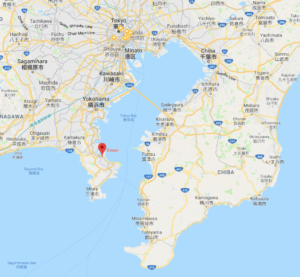

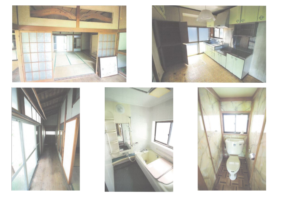
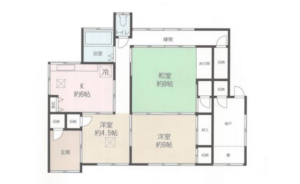
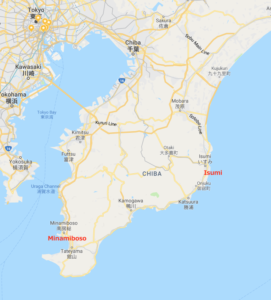



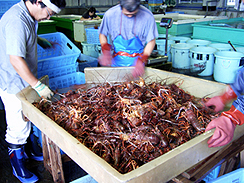



30 comments for “Are you interested in akiya 空き家(unused house) for free in Tokyo ?:How to find a house for almost nothing in Japan ?”